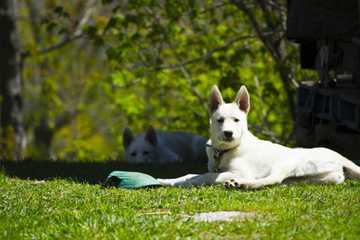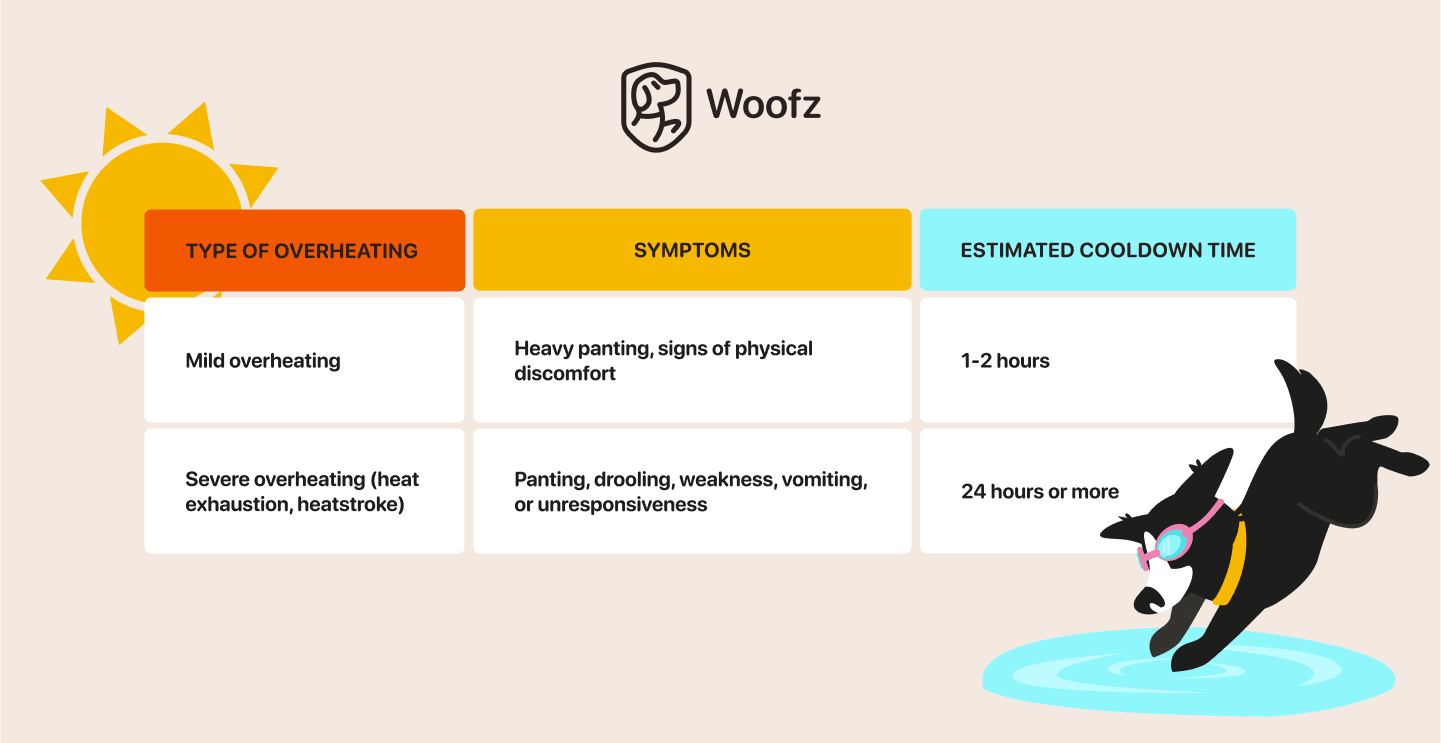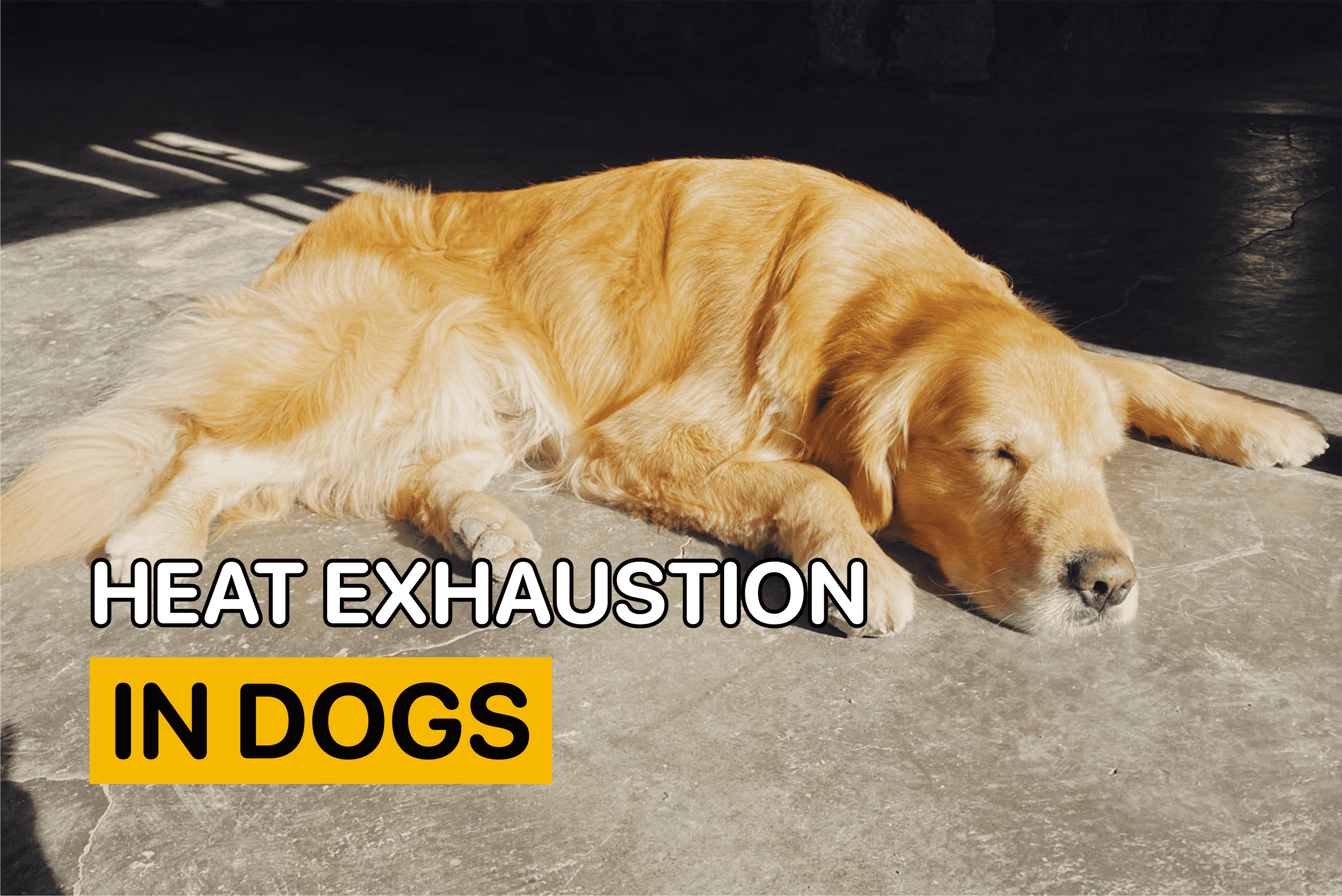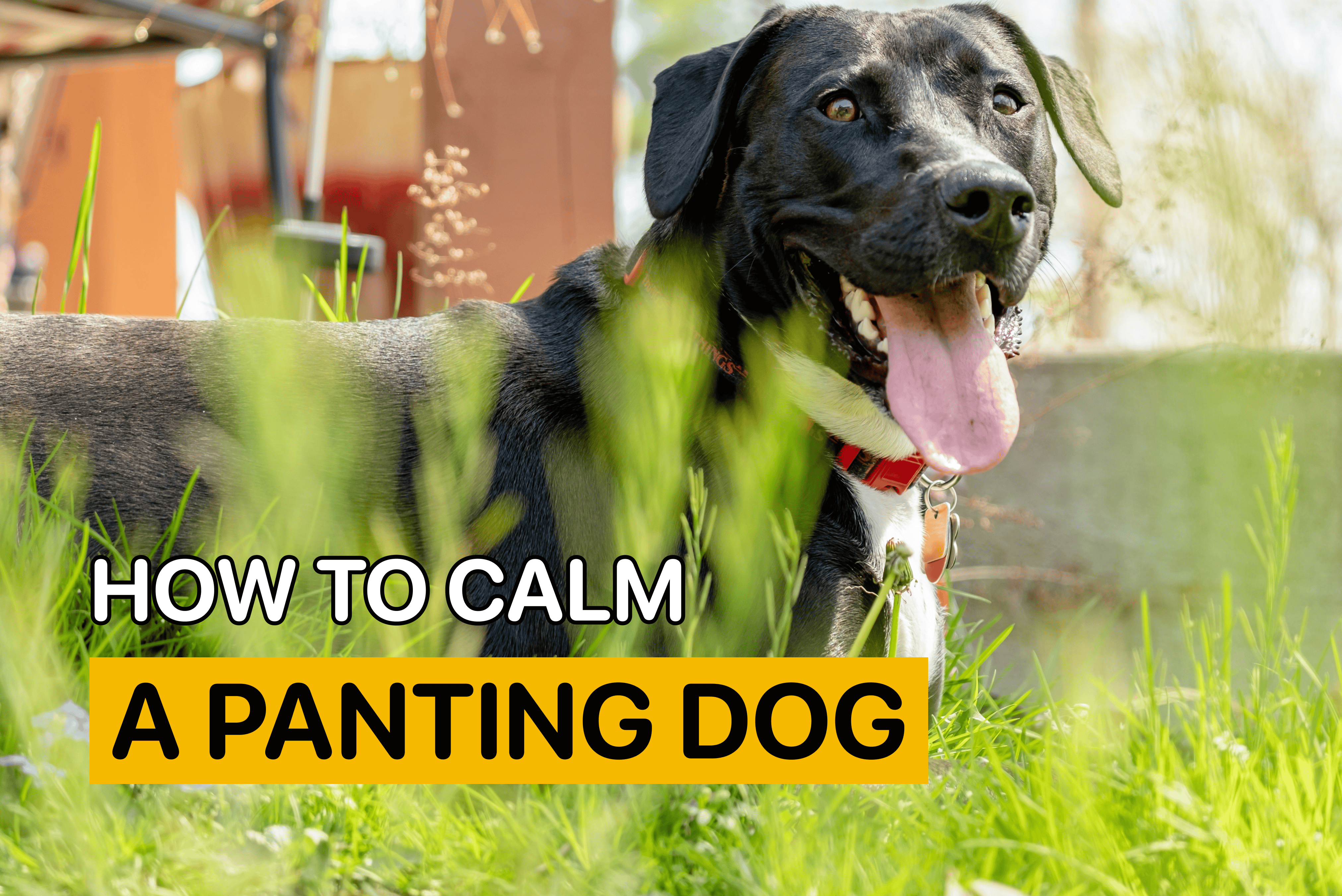8 Ways to Cool Your Dog Down: Tips to Decrease Body Temperature

By
Woofz Team Updated on |Reviewed by
Karen PiwinskiHot weather on a summer day presents excellent opportunities for pet parents to spend more time outside, engaging their dogs in fun games and exploring the world around them. Summer, however, can bring not only the joy and pleasure of spending time outdoors, but it can also be a health hazard or even have fatal consequences. Our furry family members are particularly susceptible to overheating, which can lead to heat exhaustion or even heatstroke.
If you’re concerned about your pet’s safety in extreme heat, knowing how to cool them down quickly and efficiently is essential. Let’s proceed with the best ways to cool a dog down.
How to Cool a Dog Down Fast in Hot Weather: 8 Practical Methods
When you suspect your companion is suffering from overheating (or even heatstroke), it’s vital to act quickly.

Because of canines’ decreased ability to regulate their body temperature in hot weather, heatstroke can turn fatal in a matter of minutes to an hour. That’s why you should concentrate on helping them dissipate heat and bring their core temperature back to normal (100.0°F to 102.5°F (37.7°C to 39.2°C).
1. Cool a dog down by removing them from extreme heat
The moment you see signs of heatstroke in your pooch, the first thing you must do is to take them away from the hot environment.

Whether we're talking about direct sunlight, extremely hot temperatures, high humidity, or all these factors combined, relocating a pet to a place with cool air and proper ventilation is of paramount importance. If you don’t, expect their body temperature to rise, which can put your pet’s life at risk.
Here are some of the ways to cool down a dog:
-
Take your dog to a cool room in the house: If you can take your pet inside when you suspect heat exhaustion, this is an ideal scenario. Find a place where your furry companion will be protected from direct sunlight (it can be dangerous inside a house, too). Open the windows to provide a cooling airflow or turn on the air conditioning.
-
Take your dog to an air-conditioned car: When you go camping or walk far away from any air-conditioned buildings, taking a dog inside a vehicle and turning on the AC is an excellent solution (but be careful to have the AC on and not to leave your companion alone in a hot car).
-
Move to a shaded area: If none of the solutions described above is applicable, take your pet to a shaded place, where they can avoid sunlight exposure. Offer them plenty of fresh water, which you can additionally cool down with ice cubes if available.
2. Cool a dog down on a cool surface
Making a dog lie down on a cold surface is an effective way to reduce their body temperature. The trick is that when your pooch lies down on the cold ground, their exposed belly (with little to no fur on it) comes into contact with a large cold area, and this contact surface helps dogs release heat from their body more effectively.

In modern homes, finding this kind of cool surface can be a challenge. Luckily, pet parents can use gel-based or water-based cooling mats. The inside of these mats consists of non-toxic substances, providing effective dissipation of internal heat and keeping a dog cool.
There are also cooling vests and jackets available to buy- they can be helpful to have on hand for hot days.
3. Ensure sufficient hydration
Fresh, cool water is a great way to help a dog stay cool in the summer heat. First, it helps your pooch stay hydrated, which can impact their overall well-being and stress resistance. Secondly, drinking water is crucial for maintaining a dog’s body temperature. They pant to expel hot air from the lungs, and to do it effectively, a sufficient level of water in the system is required.
In hot weather, your pet’s daily water intake should be increased, especially if they exercise outdoors. Monitor how much water they drink and encourage them to drink more often. To do that, grab a collapsible water bowl and water bottle when you take your pooch for a walk and interrupt your activities for rehydration.
4. Create a steady airflow
Another way to provide your pooch with an extra opportunity to cool down is to create a circulating airflow that will accelerate the process of releasing body heat.

You can use a fan to do this. Though not all canines like it, it’s still worth trying (especially if you don’t have air conditioning). You can turn on a fan to circulate air more quickly and help cool down a dog. Be mindful, however, of your dog’s reaction to a steady flow of cool air, as some pets don’t like it.
5. Submerge the paw pads in water
Wetting your dog’s paws is an effective cooling technique. It helps reduce their body temperature, as paws in canines have sweat glands (merocrine glands) that play an active part in body temperature regulation. Wet pads also help evaporate body heat more efficiently. To wet the pads, you can put your pet’s paws in a shallow kiddie pool or a bathtub with a few inches of cool water.

Alternatively, you can apply wet blankets and wipe them down with cool water on their skin. It’s vital to use lukewarm water and avoid cold water, since the latter can cause the dog’s blood vessels to spasm or provoke shock. Finally, ensure their paw pads are uncovered when they’re in a cool area, so the air can circulate freely and help dissipate the heat.
6. Encourage swimming
Swimming in hot weather is an excellent way to help your pooch cool down and stay active despite unfavorable weather conditions. Additionally, it can be the perfect opportunity to strengthen your bond and spend quality time together. However, beware of hot surfaces, like hot concrete sidewalks near the pool, as these can cause burns to your dog’s sensitive skin on their paws.
7. Soak the coat for extra cooling
Most dogs with thick coats, such as the Alaskan Malamute, Siberian Husky, and Chow Chow, are particularly prone to overheating because their fur prevents the release of body heat and acts as an insulator, trapping the heat inside. To help these breeds cool down, you can try submerging their coat in water.

When paired with other methods, this can help prevent heat stress and regulate a dog’s body temperature. Use lukewarm or cool water (but not cold water) and pour it gently all over your pet’s coat. Pay extra attention to areas with less fur, such as the neck, groin, belly, and armpits. As the water evaporates, it will lower the dog’s body temperature.
8. Use the garden hose
A garden hose can be effective not only for cooling down your pooch, but it can also be an entertaining way to soak their coat and make them feel better. However, as with any new activity, it’s essential to monitor how your pooch responds to it and not pressure them into something they resist. Below, you’ll find a few things to consider.
- Start with cooler but not cold water to avoid shock and scaring your dog
- Introduce the hose gradually and reduce the water temperature a bit after some time
- Avoid oversoaking, as it can trap the heat inside
- Concentrate on the neck, paws, and other areas that contribute to effective heat loss
- After playing with the hose, allow the dog to dry naturally or use a towel to help them dry off.

The best way to cool down a dog in summer heat is a combination of different steps and strategies. The most essential ones include moving to a cool indoor environment with sufficient air circulation, providing plenty of fresh water to ensure proper hydration, and using additional cooling techniques, such as applying wet towels or submerging their paws in water.
According to Dr. Hunter Finn, Texas-based integrative pet expert, it’s critical to start cooling your dog as soon as possible, even before you contact a veterinarian for further guidance. The first thing you should do is to dampen your pet’s fur and put them near the fan. This will facilitate heat dissipation and promote evaporative cooling.
How Long Does It Take for a Dog to Cool Down?
The time your pooch needs to cool down and return to normal varies and depends on the severity of the overheating. Avoid drastic drops in temperature and help your pet cool down gradually. Also, if you notice any signs of heatstroke, consult a vet.

Other factors that influence how well your dog can regulate their core body temperature are their breed, size, age, and health status:
-
Breed: Certain breeds, such as Brachycephalic dogs or Alaskan breeds, have a hard time regulating their body temperature due to some breed-associated features (flat-faced dogs, thick coats).
-
Age: Young puppies are typically very active, which increases their likelihood of developing heat stress. What’s more, they can’t recognize the signs of overheating, like adult dogs do. Senior companions often develop health conditions that make them more susceptible to the effects of hot or humid weather.
-
Size: Giant breeds and canines with a higher body mass index (BMI) tend to suffer from heat more. Excess fat acts as an extra layer of insulation, preventing effective heat loss in extreme temperatures.
-
Health: Respiratory and cardiovascular conditions can contribute to overheating.
Wrap Up
Overheating in canines is dangerous, and you have to act quickly and help your pet cool down. You can achieve this through a combination of environmental changes, ensuring proper hydration and adequate airflow, as well as helping your dog dissipate body heat by soaking their coat or submerging their paws in water. Be sure to contact the vet if you suspect severe overheating or heatstroke.



